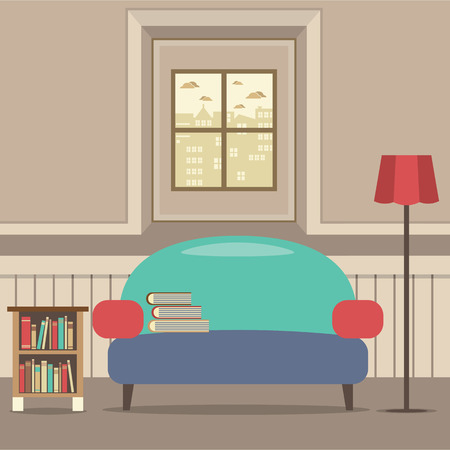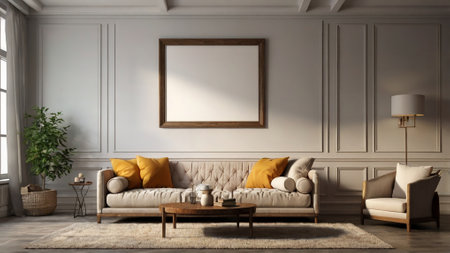Introduction: Shifting Tastes in British Living Rooms
The British living room has long been a canvas upon which the nation’s evolving tastes and cultural values are painted. Traditionally, these spaces have exuded a sense of heritage, with ornate fireplaces, Chesterfield sofas, and meticulously arranged family heirlooms at their core. Yet, as the twenty-first century advances, there is an unmistakable shift—an embrace of contemporary aesthetics that favour open layouts, minimalist furnishings, and bold accents. This juxtaposition of classical and modern sensibilities not only reflects changing lifestyles but also the broader cultural conversations occurring across the UK. Today’s British homeowners find themselves navigating a fascinating crossroads: honouring cherished traditions while welcoming innovative design elements that speak to global influences and urban living. As we explore the contrasts between classical and contemporary living room layouts in British homes, we uncover more than just stylistic preferences; we trace the narrative of a society balancing continuity and change.
Hallmarks of Classical British Living Room Layouts
Classical British living rooms are the epitome of timeless elegance, drawing on centuries-old traditions that prioritise balance, comfort, and a reverence for heritage. This section delves into the distinctive features that define these interiors, from their symmetrical arrangements to their ornate architectural details.
Symmetry and Structure
Perhaps the most telling hallmark of a classical British living room is its commitment to symmetry. Furniture is typically arranged in pairs—armchairs flanking a sofa, matching side tables, and lamps positioned equidistantly. This sense of order creates an inviting, harmonious environment, encouraging conversation and relaxation.
Focal Fireplaces
The fireplace is more than a source of warmth; it is often the heart of the British home. In traditional layouts, seating naturally orbits around this central feature, with mantelpieces serving as platforms for displaying treasured heirlooms or art. The fireplace’s prominence underscores both practicality and aesthetic significance in classic British design.
Ornate Mouldings & Architectural Detailing
Elaborate cornicing, ceiling roses, and decorative skirting boards are prevalent in period homes across Britain. These features not only elevate the sense of grandeur but also pay homage to historical craftsmanship. Even modest terraces frequently boast intricate plasterwork that frames the room with quiet sophistication.
Embrace of Heritage Motifs
Traditional British living rooms are rich with visual references to the past. Patterns such as damasks, chintz florals, or tartans adorn upholstery and curtains, while colour palettes lean towards deep greens, burgundies, and navy blues. Antique furniture—often mahogany or oak—anchors the space with a palpable sense of history.
Signature Elements in Classical British Living Rooms
| Element | Description | Cultural Significance |
|---|---|---|
| Symmetry | Mirrored furniture placement and balanced accessories | Reflects orderliness valued in British society |
| Fireplace Focus | Main gathering spot with ornate mantelpiece | Centre of family life and hospitality |
| Ornate Mouldings | Cornices, ceiling roses, decorative trims | Nods to Georgian and Victorian-era craftsmanship |
| Heritage Motifs | Tartan, chintz, florals on soft furnishings | Pays tribute to national identity and tradition |
| Antique Furnishings | Sofas, armchairs, sideboards in classic woods | Celebrates longevity and quality over trendiness |
This intricate layering of architectural detail, cultural motifs, and considered layout results in spaces that feel deeply rooted yet perennially welcoming—a true reflection of Britain’s storied domestic tradition.

3. Contemporary British Living Spaces: Key Features
In the modern era, British living rooms have undergone a quiet revolution. Today’s designs diverge sharply from their classical counterparts, embracing both practicality and style in equal measure. A defining characteristic of contemporary British homes is the open-plan concept, where walls are removed to create fluidity between the lounge, kitchen, and dining areas. This shift not only maximises natural light but also fosters a greater sense of sociability—perfect for everything from informal gatherings to family life.
Minimalist décor plays a starring role in these spaces. Neutral palettes dominate, with whites, greys, and soft pastels lending an airy feel to even the most modest terraces or flats. Furniture tends towards sleek lines and understated elegance; think Scandi-inspired sofas, modular shelving, and multifunctional coffee tables that double as storage units. Clutter is eschewed in favour of curated displays—an approach that reflects the wider British appreciation for orderliness without sacrificing personality.
Technological integration is another hallmark of contemporary British living rooms. Smart lighting systems, integrated sound solutions, and cleverly concealed charging points are no longer novelties but essentials. Homeowners prioritise seamless connectivity without letting gadgets dominate the aesthetic; televisions may be wall-mounted or hidden behind bespoke cabinetry, while voice-activated assistants quietly blend into the background.
Finally, multifunctionality is at the heart of modern layouts. With many Britons working flexibly or from home entirely, living rooms often double as temporary offices or creative nooks. Foldaway desks, pull-out sofa beds, and adjustable lighting ensure these spaces adapt effortlessly to changing needs—whether it’s a quiet evening in with a book or an impromptu Zoom call.
This contemporary approach signals more than just a change in taste; it represents a pragmatic response to the evolving rhythms of British life, where adaptability and comfort go hand-in-hand with subtle sophistication.
Cultural Context: British Identity in Design Choices
When exploring the contrasts between classical and contemporary living room layouts in British homes, it is essential to recognise how deeply rooted cultural factors shape these interior decisions. British history, collective values, and everyday customs have all left their mark on both traditional and modern design sensibilities. This interplay between past and present creates a unique design language that is distinctly British.
The Imprint of History
British classical interiors are often inspired by the grandeur of Georgian, Victorian, or Edwardian eras. These periods prized symmetry, formality, and decorative detail. Elements such as ornate cornicing, fireplaces as focal points, and rich textiles echo the country’s aristocratic heritage. In contrast, contemporary British layouts reflect the post-war shift towards practicality and minimalism, influenced by open-plan living and changing social structures.
Key Historical Influences
| Era | Influence on Classical Design | Influence on Contemporary Design |
|---|---|---|
| Georgian/Victorian | Symmetry, ornate mouldings, formal seating arrangements | Reinterpretation of space for multifunctional use |
| Post-War Britain | Preservation of original features (e.g., fireplaces) | Simplified layouts, integration of technology |
| Modern Day | Nostalgic nods to tradition in finishes and details | Open-plan spaces reflecting cosmopolitan lifestyles |
Social Habits and Home Life Attitudes
The British home has long been considered a sanctuary from the outside world—a place for both privacy and hospitality. Traditional living rooms were designed for hosting guests with a certain formality, often centring around the fireplace or display cabinet. Today’s contemporary spaces prioritise flexibility and informality: modular sofas replace rigid suites, and coffee tables double up as workstations or play areas for children.
Changing Social Dynamics
- Entertaining: Classical homes may still feature drawing rooms for special occasions; contemporary homes merge entertaining with daily life through open-plan layouts.
- Family Life: Traditional designs separate family activities into different rooms; modern approaches embrace communal zones where activities overlap.
- Privacy vs. Openness: The historical preference for private parlours contrasts with today’s focus on light-filled, shared spaces.
A Living Reflection of British Identity
Ultimately, both classical and contemporary living room layouts encapsulate what it means to be at home in Britain—whether through the preservation of historic charm or the embrace of innovation. As societal values continue to evolve, so too do the spaces in which Britons live, entertain, and relax—each design choice reflecting not just individual taste but a broader cultural narrative.
5. Functionality and Flow: Layout Logic
When comparing the spatial planning of classical and contemporary living room layouts in British homes, the priorities around movement, conversation zones, and adaptability reveal distinct philosophies rooted in their respective eras. The classical layout, often seen in Victorian or Edwardian terraces and townhouses across the UK, favours a more formal arrangement. Furniture is traditionally positioned to frame focal points such as a fireplace or an ornate coffee table, with symmetrical seating that encourages face-to-face conversation. This approach can create an intimate atmosphere but sometimes restricts fluid movement, with pathways dictated by established conventions rather than flexibility.
In contrast, contemporary British living rooms champion open-plan living and multifunctionality. Here, the flow of the space is paramount. Sofas may float away from walls to define zones for lounging, reading, or watching television, while modular furniture and clever storage solutions support the ever-changing needs of modern family life. The adaptability of these layouts accommodates both quiet nights in and lively gatherings—an essential consideration for today’s homeowners who value versatility over rigid formality.
Conversation zones in classical designs are delineated by physical boundaries—think rugs, bookcases, or even pocket doors—while in contemporary spaces, visual cues such as lighting schemes or subtle shifts in flooring material mark transitions between functions. This difference reflects broader cultural shifts: the classical home embodies tradition and continuity, whereas the contemporary British home speaks to openness and ease of interaction.
Ultimately, the logic behind each layout is a mirror of its time. Classical rooms offer structured elegance suited to ceremonial entertaining and predictable routines; contemporary spaces invite spontaneous socialising and flexible living. In both cases, thoughtful spatial planning ensures that British living rooms remain at the heart of domestic life—whether they’re hosting afternoon tea or a Netflix marathon.
6. Blending Eras: Hybrid British Living Room Trends
The modern British living room is increasingly becoming a canvas for creative expression, where the boundaries between classical and contemporary are artfully blurred. Homeowners across the UK are finding ingenious ways to curate spaces that feel both timeless and relevant, reflecting a uniquely British appreciation for heritage and innovation alike.
Layering History with Modernity
One of the most striking trends is the pairing of period features—think ornate cornices, decorative ceiling roses, or original fireplaces—with sleek, modular furnishings. This juxtaposition celebrates the architectural past of many British homes while embracing the comfort and flexibility of contemporary design. For example, a Victorian terrace might showcase its high ceilings and intricate mouldings alongside a minimalist L-shaped sofa or glass coffee table, creating an intriguing visual dialogue between old and new.
Curated Contrasts in Texture and Colour
British interiors often thrive on subtle contrasts. Plush velvet cushions in jewel tones can be set against crisp white walls, or antique oak sideboards might stand beside streamlined metal floor lamps. This approach isn’t about clashing styles, but rather about harmonising them through careful curation—a nod to Britain’s long history of absorbing and adapting global influences.
Personal Touches and Local Flair
No hybrid living room would be complete without personal touches that speak to the homeowner’s story. Whether it’s vintage prints from a local charity shop, hand-thrown ceramics from Cornwall, or a bold piece of contemporary British art, these elements anchor the space in its cultural context. The result? Living rooms that are deeply characterful and unmistakably British, bridging eras to create homes that feel both lived-in and forward-thinking.
7. Conclusion: Choosing the Right Style for Your British Home
As we reflect on the distinct virtues of classical and contemporary living room layouts in British homes, the choice ultimately hinges on a thoughtful blend of lifestyle, property character, and individual preference. Traditional layouts often harmonise with period properties—think Victorian terraces or Edwardian semis—where ornate details, symmetry, and a sense of heritage feel most at home. These spaces tend to foster a warm, communal atmosphere ideal for families or those who cherish time-honoured British customs such as afternoon tea or fireside gatherings.
Conversely, contemporary layouts resonate with modern British living—streamlined open-plan arrangements, minimalist aesthetics, and multifunctional spaces that adapt easily to urban flats or new-build houses. For young professionals or families seeking flexibility and a fresh aesthetic, this approach may better support dynamic routines and evolving tastes.
Yet, there is no one-size-fits-all answer. The quintessentially British knack for eclecticism means that many homeowners find joy in blending both styles—perhaps pairing classic cornices with sleek furnishings or introducing bold contemporary art into a period setting. Consider your daily habits: do you entertain often, prefer quiet reading nooks, or need ample space for children’s play? Reflect on your property’s architectural bones—does it sing with history or champion modern design?
Ultimately, the most successful living room layout is one that feels authentic to you while respecting the spirit of your home’s architecture. Embrace what brings you comfort and delight; after all, the true hallmark of British interior style is its ability to evolve gracefully while honouring both past and present.


